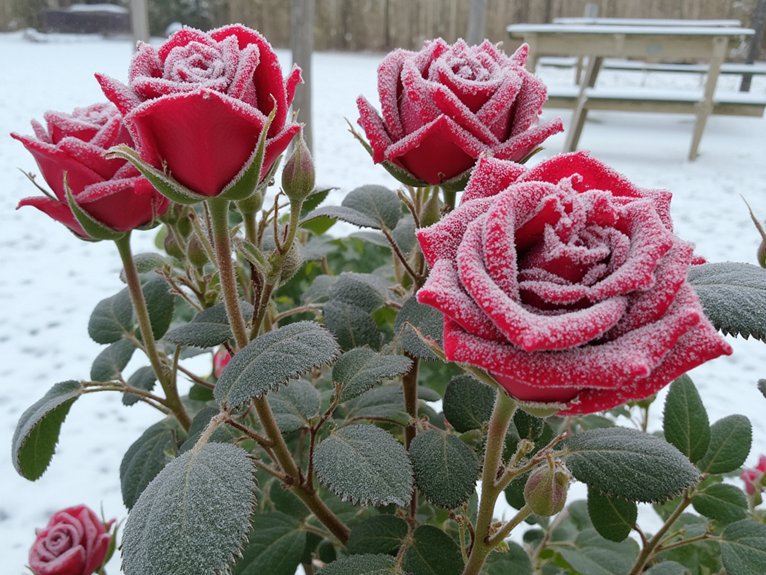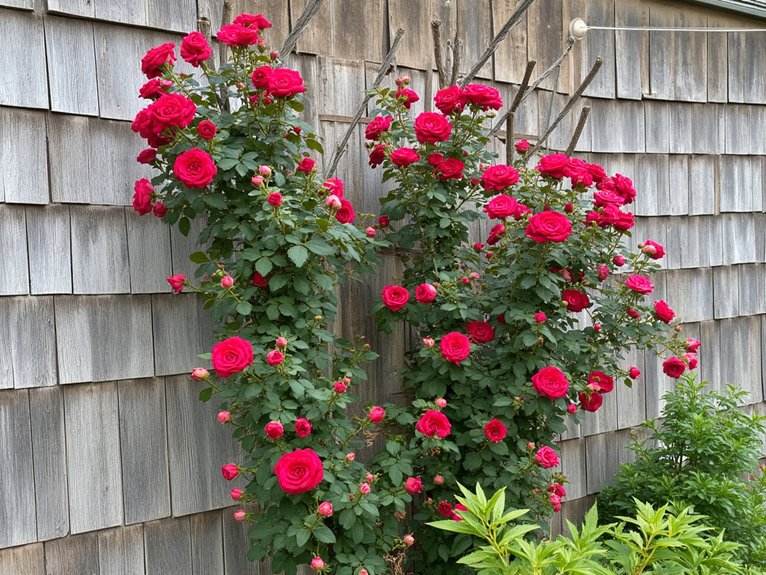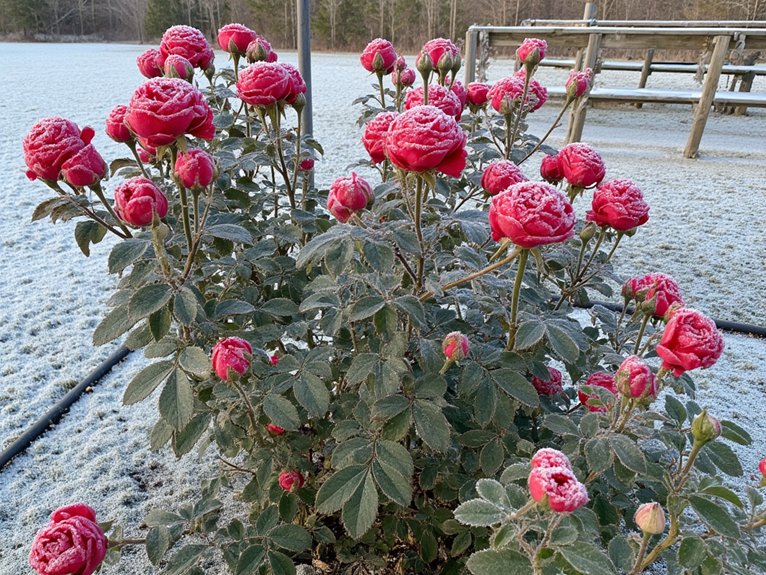Nearly 65% of gardeners believe cold-hardy roses are too difficult to grow in harsh winter regions. You’ll be surprised to learn that certain rose varieties can actually thrive in temperatures as low as -40°F. “These resilient plants have adapted to survive extreme conditions while maintaining their stunning blooms,” says horticulturist Dr. Sarah Chen. Whether you’re interested in compact bushes or towering climbers, understanding the right varieties and care techniques will transform your winter garden’s potential.
Contents
Understanding Cold-Hardy Rose Varieties

When choosing roses that can withstand harsh winters, you’ll find several exceptional varieties that thrive in zones as cold as -40°F. These cold-hardy rose varieties include compact options like Simon Fraser, which grows 1-2 feet tall, and towering climbers like Polestar, reaching heights of 10-18 feet.
Some of the toughest performers are William Baffin, Lauren, and Nootka roses. “Own-root roses typically show better cold hardiness than grafted varieties,” notes rosarian Dr. Sarah Chen. For best results, focus on plants rated for zones 2-3, as they’re specifically bred to handle extreme temperatures while maintaining beautiful blooms.
Essential Growing Conditions for Winter Roses
Three key factors determine whether your winter-hardy roses will thrive: proper sunlight exposure, well-draining soil, and adequate spacing.
Most cold-hardy roses need full sun to produce abundant blooms, though varieties like Simon Fraser and Lauren can tolerate partial shade. You’ll want to make certain your roses receive at least 6 hours of direct sunlight daily.
Well-draining soil is essential – mix in organic matter to improve drainage and nutrients. Space your roses according to their mature size, typically 3-4 feet apart for shrub varieties and 6-8 feet for climbers like Polestar or William Baffin.
Top Climbing Roses for Northern Gardens

If you’re looking to add dramatic height and beauty to your northern garden, several climbing roses stand out for their exceptional cold hardiness. The most popular climbing varieties include William Baffin, reaching 7-10 feet tall, and Polestar, which can grow an impressive 10-18 feet.
These climbers offer multiple benefits beyond their height:
- Create stunning vertical displays on trellises and walls
- Provide natural privacy screens
- Bloom repeatedly throughout summer
- Survive temperatures down to -40°F (Zone 2)
For best results, plant these hardy climbers in full sun and provide sturdy support structures to handle their vigorous growth.
Compact Rose Selections for Small Spaces
While larger rose varieties can overwhelm small gardens, several compact cultivars offer the perfect solution for tight spaces. For superior small garden aesthetics, you’ll want to contemplate roses like ‘Simon Fraser’ and ‘Lauren’, which grow just 1-4 feet tall.
These compact selections need the same quality care as their larger cousins:
- Plant in full sun to partial shade
- Space 2-3 feet apart
- Prune in early spring
- Mulch 2-3 inches deep
‘Morden Sunrise’ is particularly well-suited for containers, reaching only 2-3 feet in height while providing stunning blooms throughout the season.
Disease-Resistant Roses That Brave the Cold

Several exceptionally hardy roses have developed natural resistance to common diseases, making them perfect choices for cold-climate gardens. You’ll find Bill Reid and Emily Carr particularly resilient, shrugging off black spot and powdery mildew even in challenging conditions.
For best disease resistance, space your roses at least 3 feet apart to promote good air circulation. Winter blooms from varieties like Simon Fraser and Lauren stay healthy without chemical sprays, thanks to their built-in immunity. As rosarian Dr. Sarah Chen notes, “These cultivars have been specifically bred to handle both disease pressure and extreme cold, often surviving temperatures down to -40°F.”
Pruning and Maintenance Tips for Winter Success
Properly timing your winter rose pruning makes all the difference in maintaining healthy, vibrant plants throughout the cold season. For cold-hardy varieties like ‘William Baffin’ and ‘Polestar’, you’ll want to follow these essential pruning techniques:
- Remove dead or diseased branches in early spring before new growth begins
- Cut back tall climbers to 6-8 feet to prevent winter wind damage
- Apply winter mulching 4-6 inches deep around the base after the ground freezes
“The key is waiting until plants are fully dormant before heavy pruning,” notes rose expert Sarah Chen. “This prevents stimulating new growth that could be killed by frost.”
